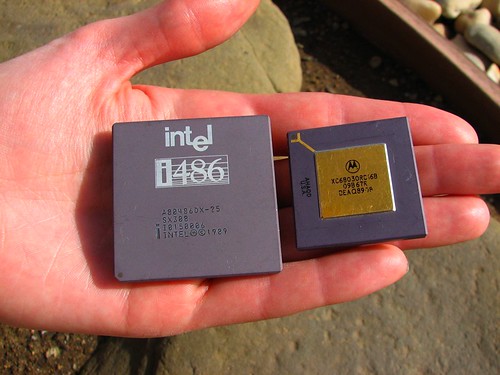
Many people throughout the world use smartphones, personal digital assistant devices (also known as PDAs) and microcomputers. All of these devices utilize a key component: a microprocessor.
What is a Microprocessor?
Video of the Day
Microprocessors are integrated electrical circuits that are capable of carrying out the instructions of a computer software application or program. These electrical circuits receive instructions from the application or program, interpret these instructions and execute an action or set of actions, based upon what the instructions call for.
Video of the Day
Importance
A device that uses a microprocessor is normally capable of many functions, such as word processing, calculation, and communication via Internet or telephone. However, for the device to work properly, the microprocessor itself has to communicate with other parts of the device. For example, a microprocessor would need to communicate with the video display to control the output data that a program may produce. Therefore, a microprocessor would act as device's "brain" in that it transmits, receives and interprets the data needed to operate a device.
History
Microprocessor circuits were first produced starting in 1969, with the first advertisement for a microprocessor appearing in 1971. The Intel 4004 4-bit microprocessor was developed as a central processing unit for a Japanese calculator manufacturer named Busicom. This microprocessor operated at 740 kHz, or 740,000 cycles per second.
The Intel 4004 4-bit microprocessor was capable of accepting, translating and communicating 4-bit instructions, or "words" of information. In 1972, Intel released the 8008, an 8-bit microprocessor. Soon after, in 1974, 16-bit processors, such as the National Semiconductor IMP-16 and the National Semiconductor PACE, were offered to the public. AT&T Bell Labs introduced the 32-bit processor in 1979.
Technological advances in electronic circuits have allowed much faster (and smaller) microprocessor circuits to be created. For example, in 2009, the Intel Core i7 processor (a 64-bit processor) operated at 3.33 GHz, or 3.33 billion cycles per second.
Types
Processor types are often measured in "bits," or how wide of an instruction set the processor can accept.
A 4-bit microprocessor can accept, translate and communicate a 4-bit, or four-integer (such as "0000"), instruction set, also known as a 4-bit "word." An 8-bit microprocessor can process an 8-bit instruction set (such as "00000000"). A 16-bit microprocessor can utilize a 16-bit word, a 32-bit processor uses a 32-bit word and so forth.
Most computer microprocessors sold since 2000 have been either 32-bit or 64-bit processors. In particular, since 2004, 64-bit, multicore (often called "dual-core" or "quad-core") processors have become commonly installed in new computers. However, other devices (such as smartphones and PDAs) make use of 32-bit processors.
Practical Applications
Microprocessors can be found in calculators, gaming consoles, wristwatches, consumer electronics and even automobiles.